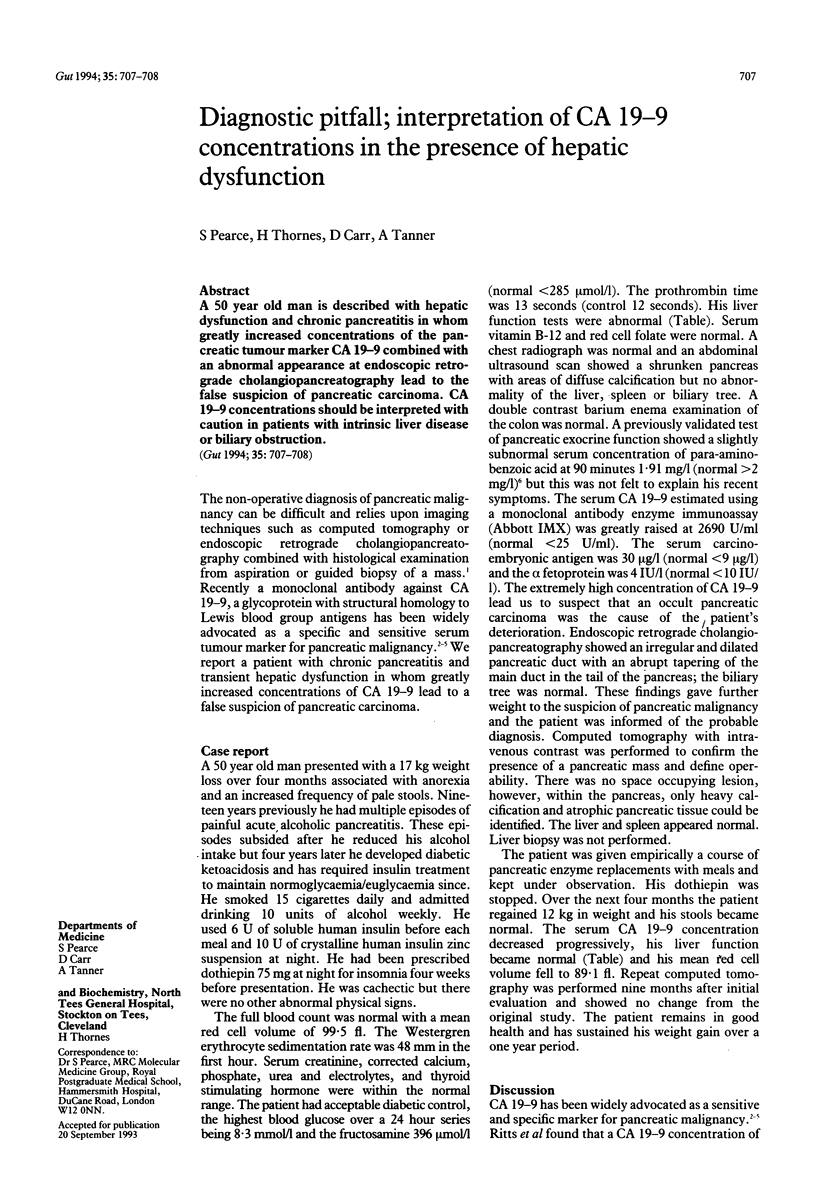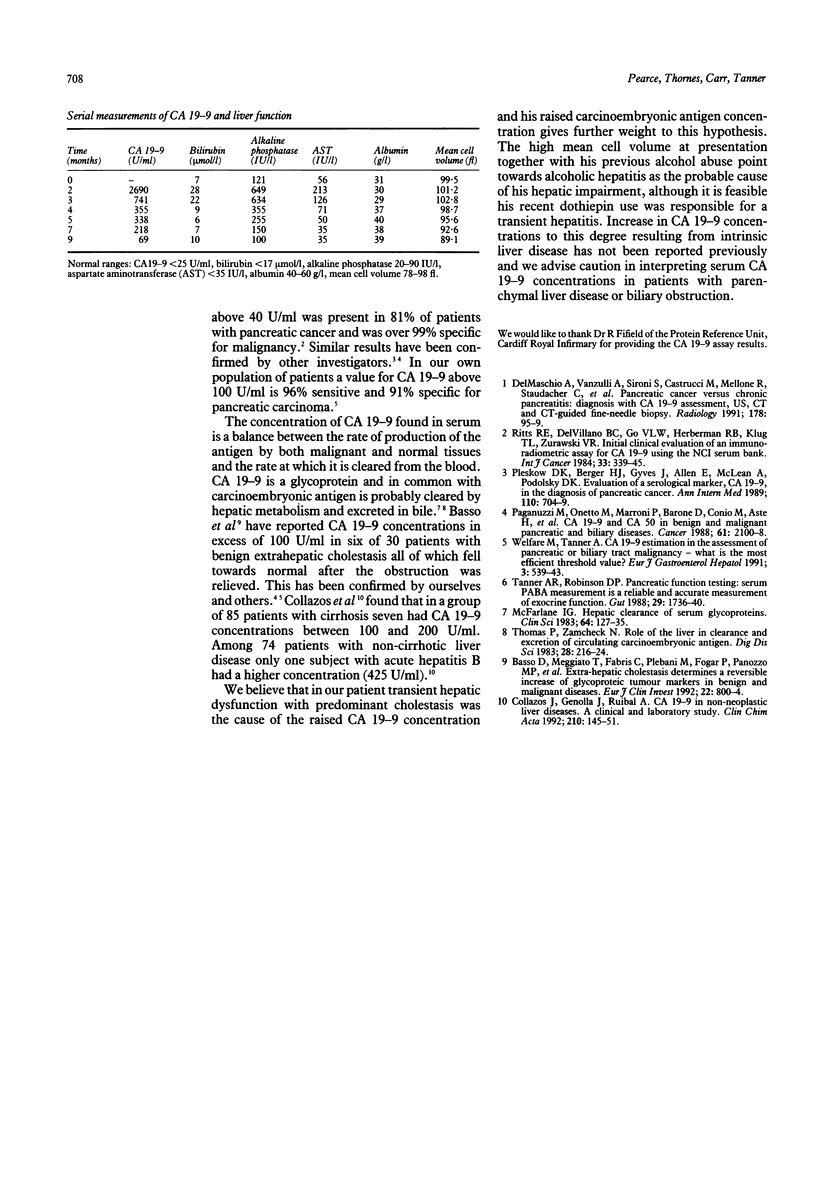Abstract
A 50 year old man is described with hepatic dysfunction and chronic pancreatitis in whom greatly increased concentrations of the pancreatic tumour marker CA 19-9 combined with an abnormal appearance at endoscopic retrograde cholangiopancreatography lead to the false suspicion of pancreatic carcinoma. CA 19-9 concentrations should be interpreted with caution in patients with intrinsic liver disease or biliary obstruction.
Full text
PDF

Selected References
These references are in PubMed. This may not be the complete list of references from this article.
- Basso D., Meggiato T., Fabris C., Plebani M., Fogar P., Panozzo M. P., Del Favero G. Extra-hepatic cholestasis determines a reversible increase of glycoproteic tumour markers in benign and malignant diseases. Eur J Clin Invest. 1992 Dec;22(12):800–804. doi: 10.1111/j.1365-2362.1992.tb01449.x. [DOI] [PubMed] [Google Scholar]
- Collazos J., Genolla J., Ruibal A. CA 19-9 in non-neoplastic liver diseases. A clinical and laboratory study. Clin Chim Acta. 1992 Sep 15;210(1-2):145–151. doi: 10.1016/0009-8981(92)90053-s. [DOI] [PubMed] [Google Scholar]
- DelMaschio A., Vanzulli A., Sironi S., Castrucci M., Mellone R., Staudacher C., Carlucci M., Zerbi A., Parolini D., Faravelli A. Pancreatic cancer versus chronic pancreatitis: diagnosis with CA 19-9 assessment, US, CT, and CT-guided fine-needle biopsy. Radiology. 1991 Jan;178(1):95–99. doi: 10.1148/radiology.178.1.1984331. [DOI] [PubMed] [Google Scholar]
- McFarlane I. G. Hepatic clearance of serum glycoproteins. Clin Sci (Lond) 1983 Feb;64(2):127–135. doi: 10.1042/cs0640127. [DOI] [PubMed] [Google Scholar]
- Paganuzzi M., Onetto M., Marroni P., Barone D., Conio M., Aste H., Pugliese V. CA 19-9 and CA 50 in benign and malignant pancreatic and biliary diseases. Cancer. 1988 May 15;61(10):2100–2108. doi: 10.1002/1097-0142(19880515)61:10<2100::aid-cncr2820611028>3.0.co;2-z. [DOI] [PubMed] [Google Scholar]
- Pleskow D. K., Berger H. J., Gyves J., Allen E., McLean A., Podolsky D. K. Evaluation of a serologic marker, CA19-9, in the diagnosis of pancreatic cancer. Ann Intern Med. 1989 May 1;110(9):704–709. doi: 10.7326/0003-4819-110-9-704. [DOI] [PubMed] [Google Scholar]
- Ritts R. E., Jr, Del Villano B. C., Go V. L., Herberman R. B., Klug T. L., Zurawski V. R., Jr Initial clinical evaluation of an immunoradiometric assay for CA 19-9 using the NCI serum bank. Int J Cancer. 1984 Mar 15;33(3):339–345. doi: 10.1002/ijc.2910330310. [DOI] [PubMed] [Google Scholar]
- Tanner A. R., Robinson D. P. Pancreatic function testing: serum PABA measurement is a reliable and accurate measurement of exocrine function. Gut. 1988 Dec;29(12):1736–1740. doi: 10.1136/gut.29.12.1736. [DOI] [PMC free article] [PubMed] [Google Scholar]
- Thomas P., Zamcheck N. Role of the liver in clearance and excretion of circulating carcinoembryonic antigen (CEA). Dig Dis Sci. 1983 Mar;28(3):216–224. doi: 10.1007/BF01295116. [DOI] [PubMed] [Google Scholar]


